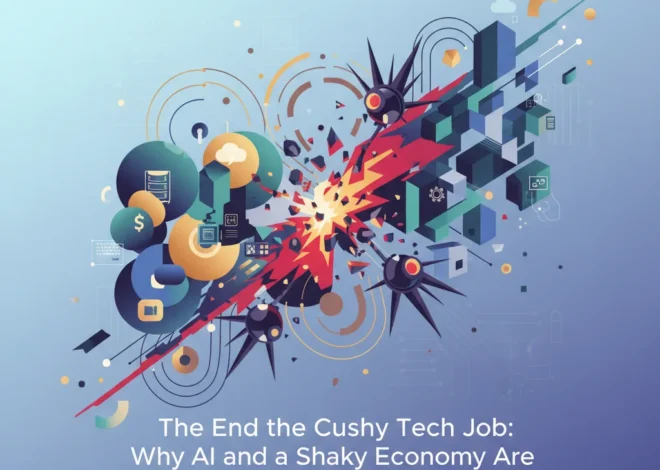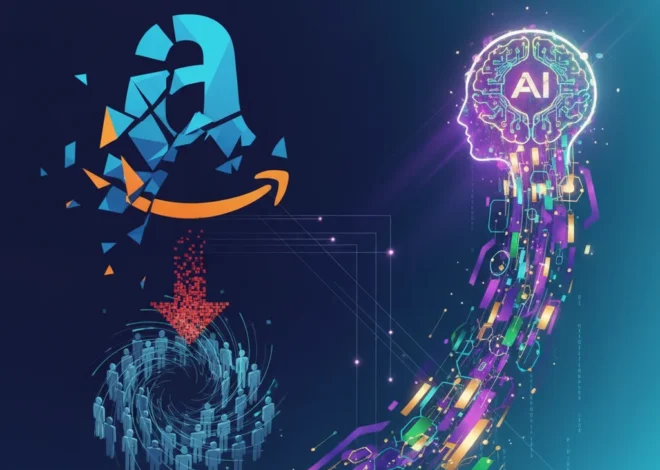Sundar Pichai’s Sobering AI Warning: Are We Riding a Rocket or a Bubble?
We’re living through a technological gold rush. The air is electric with terms like “Generative AI,” “LLMs,” and “neural networks.” Every week, it seems a new startup achieves a billion-dollar valuation, and established tech giants are pouring fortunes into the race for artificial intelligence supremacy. It feels, as Google CEO Sundar Pichai described it to the BBC, like an “extraordinary moment.”
But with every boom comes the nagging question: When’s the bust? Pichai himself voiced this concern, delivering a stark warning that if the AI bubble bursts, “no company is going to be immune.” It’s a sobering reality check from one of the most powerful figures in tech, a caution that the current frenzy of investment and hype might not be sustainable.
So, is this the dawn of a new technological era or a repeat of the dot-com crash of 2000? What does an “AI bust” even look like, and more importantly, how can developers, entrepreneurs, and professionals prepare to not just survive, but thrive through the potential turbulence? Let’s unpack this, because understanding the risks is the first step to seizing the real, long-term opportunity.
The AI Hype Train: Is It Running on Steam or Speculation?
First, let’s acknowledge why the excitement is justified. The advancements in artificial intelligence and machine learning over the past few years are nothing short of revolutionary. We’ve moved from theoretical concepts to practical applications that are reshaping entire industries. From sophisticated automation in manufacturing to AI-powered diagnostic tools in healthcare, the potential is immense.
This has triggered an unprecedented wave of investment. In 2023 alone, global corporate investment in AI reached a staggering $200 billion, according to a report by the Stanford Institute for Human-Centered AI. Startups are raising massive rounds on the promise of their proprietary algorithms, and the public markets are rewarding companies with any credible AI story. This is the engine driving the boom: a powerful combination of genuine technological breakthroughs and massive capital injection.
This boom is fundamentally changing the software landscape. The rise of AI-native SaaS (Software as a Service) platforms is creating new market leaders, while existing companies are scrambling to integrate AI features to stay competitive. The entire ecosystem, from cloud infrastructure providers to cybersecurity firms, is reorienting itself around this new paradigm. But this rapid, often frenzied, growth has some familiar, and slightly worrying, historical parallels.
Echoes of 2000: The Dot-Com Bubble vs. The AI Boom
For anyone who was in the tech industry in the late 1990s, the current climate feels like déjà vu. The dot-com era was fueled by a belief that the internet would change everything. Companies with “.com” in their name, often with no clear business model or path to profitability, achieved astronomical valuations. Then, in 2000, the bubble burst spectacularly, wiping out trillions in market value and shuttering countless startups.
The parallels are hard to ignore: massive hype, speculative investment, and a “growth at all costs” mentality. However, there are also fundamental differences that make the current AI boom a unique phenomenon. Let’s compare the two eras.
Below is a table comparing key aspects of the Dot-com Bubble with the current AI Boom:
| Metric | The Dot-Com Bubble (Late 1990s) | The AI Boom (2020s) |
|---|---|---|
| Underlying Infrastructure | Nascent. Dial-up internet was common. Cloud computing didn’t exist. High barrier to entry for building software. | Mature. High-speed internet is ubiquitous. Massive, scalable cloud infrastructure (AWS, Azure, GCP) is available on demand. |
| Business Models | Often unclear or non-existent. Valuations based on “eyeballs” and potential, not revenue. | Often tied to existing, proven models like SaaS. Clearer paths to monetization (API calls, subscriptions, enterprise licenses). |
| Key Technology | The public internet, web browsers, and basic e-commerce platforms. | Complex machine learning models, vast datasets, and specialized hardware (GPUs). The tech is fundamentally more sophisticated. |
| Market Impact | Primarily focused on consumer web, media, and retail. | Affecting nearly every industry, from healthcare and finance to manufacturing and cybersecurity. |
| Investment Focus | Building websites and online portals. The “digital storefront.” | Building foundational models and highly specialized AI applications for enterprise automation and innovation. |
The key takeaway? While the hype cycles are similar, the foundation of the AI boom is built on far more mature technology and infrastructure. The internet was a promise; AI is already a powerful tool delivering tangible results. This suggests that a potential “bust” might look very different this time around.
What an AI Market Correction Could Actually Look Like
If a bubble bursts, it won’t mean your AI-powered tools suddenly stop working. Instead, the fallout will be primarily financial and strategic, reshaping the industry in several key ways:
- Venture Capital Winter: The flood of easy money for any startup with “AI” in its pitch deck will evaporate. VCs will become far more discerning, demanding clear evidence of product-market fit, sustainable unit economics, and a real competitive advantage beyond simply using a popular large language model.
- A Wave of Consolidation: Well-capitalized tech giants (like Google, Microsoft, and Amazon) will go on a shopping spree, acquiring promising but cash-strapped startups at a discount. Talent and technology will be consolidated into the hands of a few major players. According to CB Insights, M&A activity in the AI space is already on the rise as companies look to acquire unique datasets and specialized talent.
- The Shift from “Magic” to “Metrics”: The focus will shift from demonstrating magical AI capabilities to proving a concrete return on investment (ROI). Businesses will no longer invest in AI for the sake of innovation alone; they will demand to see how it reduces costs, increases revenue, or improves efficiency.
- Focus on the Application Layer: The race to build the biggest and best foundational model will continue among a few key players, but the broader market opportunity will shift to the application layer. Success will come from using existing models in novel ways to solve specific industry problems, from improving programming productivity to creating more resilient cybersecurity defenses.
A Survival Guide for the Post-Hype Era
Sundar Pichai’s warning isn’t a reason to panic; it’s a reason to prepare. Whether you’re a developer, a startup founder, or a tech leader, the coming years will reward pragmatism and resilience over hype.
For Developers and Tech Professionals:
- Specialize and Go Deep: Don’t just be an “AI developer.” Become an expert in applying AI to a specific domain, like finance (FinTech), healthcare (HealthTech), or security. Understand the nuances of the data and the specific problems that need solving.
- Master the Full Stack: Knowing how to call an API is a start, but true value lies in understanding the full machine learning lifecycle (MLOps)—from data engineering and model training to deployment, monitoring, and security.
- Focus on Practical Skills: While theoretical knowledge is great, the market will reward those who can build, deploy, and maintain robust, scalable AI-powered software. Strong programming fundamentals are more important than ever.
For Entrepreneurs and Startups:
- Solve a Real Problem: This can’t be stressed enough. Don’t start with a technology and look for a problem. Start with a painful, expensive, or tedious problem that your customers face, and determine if AI is the best way to solve it.
- Build a Moat: Your competitive advantage can’t just be that you use a powerful AI model that your competitors can also access. A real moat comes from proprietary data, a unique workflow, deep industry partnerships, or a beloved brand and community.
- Chart a Path to Profitability: The days of burning cash for growth with no end in sight are numbered. Have a clear, realistic plan for how your business will make money. Strong unit economics will be your best defense in a tough funding environment.
The Chip War's New Frontline: Why a Dutch Power Play Could Reshape Global Tech
Beyond the Bubble: The Inevitable AI-Powered Future
Let’s return to the dot-com analogy one last time. After the crash in 2000, the internet didn’t go away. The surviving companies built the foundation for the next two decades of technological progress, leading to the mobile revolution, the rise of social media, and the dominance of the cloud. The bust was a painful but necessary correction that cleared the way for sustainable, long-term growth.
The same will be true for artificial intelligence. A market correction won’t erase the incredible progress we’ve made. It will simply shift the focus from speculative potential to demonstrated value. The companies and professionals who weather this potential storm will be the ones who build the essential infrastructure of the coming AI-native world.
Sundar Pichai’s warning shouldn’t be seen as a prophecy of doom. It’s the voice of experience from a leader who has seen hype cycles come and go. It’s a call to be smarter, more strategic, and more focused on building things that last. The AI gold rush may slow down, but the new world it’s building is here to stay.


